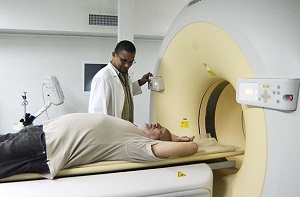 During 2015, the Cuban Ministry of Public Health (MINSAP) undertook major renovations to health care facilities, including exterior paintwork, providing innovative equipment, plumbing, electrical repairs, new furniture and increased levels of comfort for patients and staff.
During 2015, the Cuban Ministry of Public Health (MINSAP) undertook major renovations to health care facilities, including exterior paintwork, providing innovative equipment, plumbing, electrical repairs, new furniture and increased levels of comfort for patients and staff.
Health Minister Roberto Morales Ojeda made a number of visits to assess the state of completed construction works in the capital, noting that across Cuba 3,514 institutions, including 143 hospitals, 296 polyclinics, 1,983 family doctor clinics, 191 community centers for the elderly, 128 rest homes and a further 773 other centers, have improved with repairs and maintenance.
Dr. Miguel Estévez, director of the Hermanos Ameijeiras Clinical and Surgical Hospital, highlighted the added comfort of waiting rooms with new metallic seating areas, and reported that the clinical laboratory, pharmacy, hemodialysis treatment area, archives, information areas, library and inpatient wards had all benefited from renovation works.
On the 14th floor of the hospital, dedicated to rheumatology services, Dr. Araceli Chico Capote spoke about the restoration of the pantry-dining area, which had been affected by humidity. The department also received new duplex ultrasound equipment to scan for diseases which are impossible to detect during traditional clinical examinations.
At the National Institute of Oncology and Radiology, a two-year program including 24 areas of work was undertaken, covering the installation of new elevators, automated equipment for the kitchen and laundry facilities, the modernization of computer networks, innovative air conditioning technology, plus improvements to the conditions in wards, operating rooms, waiting rooms and rest areas for emergency staff.
Oncologist Elías A. Gracia Medina reported that the area devoted to outpatient chemotherapy treatment had been completely restored following fire damage. Of the three wards for patients receiving oncology treatment, two have been remodeled and work on the third is expected to conclude this year.
The repairs primarily improve conditions for patients, with fresh paint on the walls, lighting, replacing false ceilings and air conditioners, renovation of bathrooms and bedrooms. “This influences the quality of our care, we all appreciate the comfort, beauty and a good atmosphere within the hospital,” the doctor added.
The computerization of the library has benefited professionals at the Comandante Manuel Fajardo Clinical and Surgical Teaching Hospital. Dr. Aquilino Santiago Garrido explained: “There are other health centers that have digitized certain areas but our hospital has a fiber optic network, dedicated servers and other software. Still to come is the rational use of mobile devices to operate with the installed Wi-Fi network.”
Students and professors of the Faculty of Medicine, as well as workers of the Institute of Endocrinology, based nearby, have also benefited from these computer services.
The General Calixto García University Hospital is home to the Center for Research on Longevity, Aging and Health. The center’s Director, Humberto Arencibia Pérez, confirmed that the investment process had benefited outpatient areas and inpatient wards, improving the quality of medical services.
Similarly, Dr. Mirtha Ley Ng, deputy director of the Ramón González Coro Gynecology and Obstetrics Hospital, noted that a motor lobby was built and the façade was renovated. Repairs on several floors and the central sterilization area were undertaken, and a large refrigerator was installed as well as storage space for dry food. “A second stage was designed to rebuild other areas,” the doctor added.
A welcoming atmosphere permeates the Comandante Ramón Paz Borroto Student Residence, located along the central Avenue of the Presidents and 25th street, a 20-story building inaugurated by Fidel Castro in 1959 in order to accommodate students from other provinces enrolled in the University of Havana’s Faculty of Medicine.
Today, Cuba has municipal university campuses and young Cubans enroll in those nearest to their homes. As such, these accommodation facilities are now used by international medical students.
During the visits by the sector minister and a delegation composed of People’s Power deputies, vice ministers, municipal and provincial health directors, union leaders and MINSAP officials, it was reported that more than 50 million pesos were allocated for the acquisition of medical and non-medical equipment during the investment process, while the figure destined for the repair and maintenance program throughout the island surpassed 300 million pesos.
(Granma)